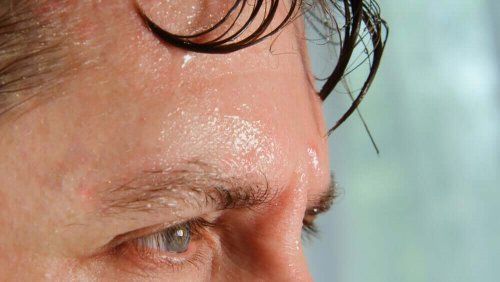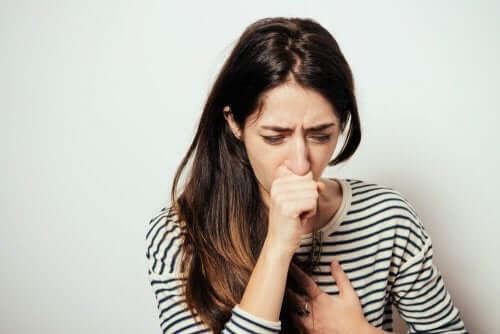The Health Consequences and Effects of Humidity

Moisture directly affects the number of allergens and microorganisms in the environment. In particular, high humidity causes both dust mites and mold to grow. Therefore, people with allergies can suffer. Here, we’ll focus on the health consequences and effects of humidity.
Even people without allergies can suffer from the effects of humidity when the levels are too high. After all, we all know that no one likes sticky heat. Now, have you ever wondered why the hot, humid air makes us feel so uncomfortable? Also, why does extremely dry air make us uncomfortable, too?
It’s important to keep humidity levels within a specific range so the extremes don’t affect you. It’s not just about keeping allergies under control, but also a matter of safety. Here, we’ll explain more about this.
The effects of high humidity on the body

One of the reasons humidity makes hot weather more unbearable is because the higher the humidity, the higher the temperature feels. When you’re in a humid place, you might think it’s even hotter, even though the temperature is at a bearable degree.
However, why does humidity make us feel hotter? To understand this, you have to know how your body cools you down and how it regulates temperature.
Read this article: The Causes of Heat Exhaustion and How to Treat it
Moisture helps cool the body
Sweating is one of the body’s cooling mechanisms. However, sweating only works to cool us down if the water leaves the skin and evaporates.
This is where the moisture comes in. The concentration of water in the air relative to temperature determines how fast water can evaporate from the skin. When the air contains more moisture, it’s more difficult for the air to absorb sweat from your skin.
The result?
We sweat and sweat, but instead of feeling relief, we just feel hot and sticky. When high humidity affects the cooling capacity of sweating, your body has to cool off in other ways. When sweating doesn’t work to cool you down, you start to overheat. Therefore, you lose water and salt, which your body needs. Overheating, or heat exhaustion, can lead to dehydration and chemical imbalances within the body.
When overheating is severe, it can cause:
- Cramps
- Syncope or fainting
- Exhaustion or weakness
- Heat stroke
The main ways to avoid overheating are to keep in mind both the temperature and the heat index. It’s important to drink plenty of water, not do too much physical activity and cool down when you notice fatigue or increased heart rate. The drier the air is, the faster it will cool and the fresher your body will feel. In addition to creating a more comfortable environment, it will also reduce allergens. Usually, these allergens often thrive in warmer, wetter conditions.
We also recommend reading: An Air Purifier Can Help Combat Pollen and Allergies
The effects of low humidity on the body

While it’s not uncommon to see humidity above 80% in the summer, in the fall that number can drop to as low as 20%. The effects of humidity at low levels are mainly in two areas: the skin and respiratory system.
Some of the respiratory symptoms from low humidity are:
- Dry nasal passages
- Sore or scratchy throat
- More contagious diseases
For the most part, the effects of low humidity on the skin are:
- Dry skin
- Chapped lips
- Dry eyes
Humidity, whether high or low, can have negative consequences for your body. Remember, relative humidity depends on temperature. These two factors are connected, and changes in one affect the other. Generally, humidity between 35% and 50% is ideal. This helps your body function normally. In addition, it prevents allergens like dust mites and mold from growing.
Keeping all of these things in mind will give you a better understanding of how your body works in relation to its environment. This way, you can do what you need to in order to prevent the effects of humidity from affecting your quality of life.
All cited sources were thoroughly reviewed by our team to ensure their quality, reliability, currency, and validity. The bibliography of this article was considered reliable and of academic or scientific accuracy.
- Carrillo, T. (2012). Libro de las enfermedades alérgicas de la fundación BBVA. Alergia al polvo: ¿qué son los ácaros y cómo evitarlos?
- OpenCourseWare. Universidad Politécnica de Madrid. Tabla para calcular sensación térmica por efecto del calor.
- A V Arundel, E M Sterling, J H Biggin, T D Sterling. Indirect health effects of relative humidity in indoor environments. (1986).
https://www.ncbi.nlm.nih.gov/pmc/articles/PMC1474709/
https://www.ncbi.nlm.nih.gov/pmc/articles/PMC1474709/
- Baughman, A. Arens, Edward A. Indoor Humidity and Human Health–Part I: Literature Review of Health Effects of Humidity-Influenced Indoor Pollutants. (1996).
This text is provided for informational purposes only and does not replace consultation with a professional. If in doubt, consult your specialist.








